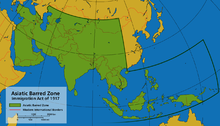The sled dog was the primary means of transportation and communication in subarctic communities around the world, and the race became both the last great hurrah and the most famous event in the history of mushing, before first aircraft in the 1930s and then the snowmobile in the 1960s drove the dog sled almost into extinction. The resurgence of recreational mushing in Alaska since the 1970s is a direct result of the tremendous popularity of the Iditarod Trail Sled Dog Race, which honors the history of dog mushing with many traditions that commemorate the serum run.
Epidemic
The only doctor in Nome and the surrounding communities was Curtis Welch, who was supported by four nurses at the 24-bed Maynard Columbus Hospital. In the summer of 1924, his supply of 80,000 units of diphtheria antitoxin (from 1918) expired, but the order he placed with the health commissioner in Juneau did not arrive before the port closed.
Shortly after the departure of the last ship of the year, the Alameda,[when?] a two-year-old Alaska Native from the nearby village of Holy Cross became the first to display symptoms of diphtheria. Welch diagnosed it as tonsillitis, dismissing diphtheria because no one else in the child’s family or village showed signs of the disease, which is extremely contagious and can survive for weeks outside the body. The child died the next morning, and an abnormally large number of cases of tonsillitis were diagnosed through December, including another fatality on December 28, which is rare. The child’s mother refused to allow an autopsy. Two more Alaska Native children died, and on January 20 the first case of diphtheria was diagnosed in three-year-old Bill Barnett, who had the characteristic grayish lesions on his throat and in his nasal membranes. Welch did not administer the antitoxin, because he was worried the expired batch might weaken the boy, who died the next day.
On January 21, seven-year-old Bessie Stanley was diagnosed in the late stages of the disease, and was injected with 6,000 units of antitoxin. She died later that day. The same evening, Welch called Mayor George Maynard, and arranged an emergency town council meeting. Welch announced he needed at least one million units to stave off an epidemic. The council immediately implemented a quarantine, and Emily Morgan was appointed Quarantine Nurse.
On January 22, 1925, Welch sent a radio telegram via the Washington-Alaska Military Cable and Telegraph System and alerted all major towns in Alaska including the governor in Juneau of the public health risk. A second to the U.S. Public Health Service in Washington, D.C. read:
“An epidemic of diphtheria is almost inevitable here STOP I am in urgent need of one million units of diphtheria antitoxin STOP Mail is only form of transportation STOP I have made application to Commissioner of Health of the Territories for antitoxin already STOP There are about 3000 white natives in the district”
Wings versus paws
 At the January 24 meeting of the board of health superintendent Mark Summers of the Hammon Consolidated Gold Fields proposed a dogsled relay, using two fast teams. One would start at Nenana and the other at Nome, and they would meet at Nulato. His employee, the Norwegian Leonhard Seppala, was the obvious and only choice for the 630-mile (1,014 km) round trip from Nome to Nulato and back. He had previously made the run from Nome to Nulato in a record-breaking four days, won the All-Alaska Sweepstakes three times, and had become something of a legend for his athletic ability and rapport with his Siberian huskies. His lead dog Togo was equally famous for his leadership, intelligence, and ability to sense danger.
At the January 24 meeting of the board of health superintendent Mark Summers of the Hammon Consolidated Gold Fields proposed a dogsled relay, using two fast teams. One would start at Nenana and the other at Nome, and they would meet at Nulato. His employee, the Norwegian Leonhard Seppala, was the obvious and only choice for the 630-mile (1,014 km) round trip from Nome to Nulato and back. He had previously made the run from Nome to Nulato in a record-breaking four days, won the All-Alaska Sweepstakes three times, and had become something of a legend for his athletic ability and rapport with his Siberian huskies. His lead dog Togo was equally famous for his leadership, intelligence, and ability to sense danger.
Mayor Maynard proposed flying the antitoxin by aircraft. In February 1924, the first winter aircraft flight in Alaska had been conducted between Fairbanks and McGrath by Carl Eielson, who flew a reliable De Havilland DH-4 issued by the U.S. Post Office on 8 experimental trips. The longest flight was only 260 miles (420 km), the worst conditions were – 10 F (- 23 C) which required so much winter clothing that the plane was almost unflyable, and the plane made several crash landings.
Aftermath
The death toll is officially listed as either 5, 6, or 7, but Welch later estimated there were probably at least 100 additional cases among “the Eskimo camps outside the city. The Natives have a habit of burying their children without reporting the death.” Forty-three new cases were diagnosed in 1926, but they were easily managed with the fresh supply of serum. (Salisbury, 2003, footnotes on page 235 and 243)
All participants received letters of commendation from President Calvin Coolidge, and the Senate stopped work to recognize the event. Each musher during the first relay received a gold medal from the H. K. Mulford company, and the territory awarded them each USD $25. Poems and letters from children poured in, and spontaneous fund raising campaigns sprang up around the country.
Gunnar Kaasen and his team became celebrities and toured the West Coast from February 1925 to February 1926, and even starred in a 30-minute film entitled Balto’s Race to Nome. A statue of Balto by Frederick Roth was unveiled in New York City’s Central Park during a visit on December 15, 1925. Balto and the other dogs became part of a sideshow and lived in horrible conditions until they were rescued by George Kimble and fund raising campaign by the children of Cleveland, Ohio. On March 19, 1927, Balto received a hero’s welcome as they arrived at their permanent home at the Cleveland Zoo. Because of age, Balto was euthanised on March 14, 1933 at the age of 14. He was mounted and placed on display in the Cleveland Museum of Natural History.


 Welcome to the Health and Fitness weekly diary which is cross-posted from
Welcome to the Health and Fitness weekly diary which is cross-posted from 
 On this day in 1952,
On this day in 1952,  On this day in 1917, with more than a two-thirds majority, Congress overrides President Woodrow Wilson’s veto of the previous week and
On this day in 1917, with more than a two-thirds majority, Congress overrides President Woodrow Wilson’s veto of the previous week and 
 On this day in 1925,
On this day in 1925,  At the January 24 meeting of the board of health superintendent Mark Summers of the Hammon Consolidated Gold Fields proposed a dogsled relay, using two fast teams. One would start at Nenana and the other at Nome, and they would meet at Nulato. His employee, the Norwegian
At the January 24 meeting of the board of health superintendent Mark Summers of the Hammon Consolidated Gold Fields proposed a dogsled relay, using two fast teams. One would start at Nenana and the other at Nome, and they would meet at Nulato. His employee, the Norwegian